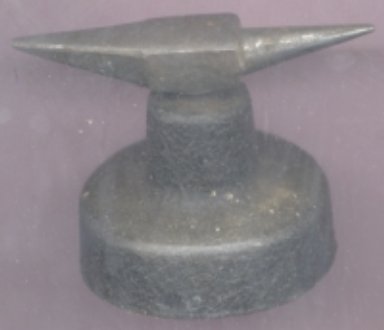Very often something has to be hammered on a hard surface. A good anvil can serve as a backup. Throughout most of civilized history, smiths have used them to fabricate everything from horse shoes to hinges and very ornate items. Some vises have them built-in behind the jaws. Many variations exist, but with the exception of some jewelers types, few are available for modelling. They are the ideal backup for riveting valve gear and straightening or flattening parts. With their horns, some accessories and a hammer, almost any shape can be fashioned in malleable materials. Style is a matter of need and taste. To reduce bouncing, weight may be an important factor, but resistance to hammer blows is the most. Thin felt glued to base will eliminate marring bench top.
It should be noted that pounding on or rapid bending of metals tends to make them brittle from the heat developed. Annealing, by heating with a torch and slowly cooling, will soften them again. A lesson from the village blacksmith.
The following vises are in the neighborhood of 6" - 8" long.

Note: Adjust brightness and contrast for optimum viewing.

Note: Adjust brightness and contrast for optimum viewing.

Note: Adjust brightness and contrast for optimum viewing.

Note: Adjust brightness and contrast for optimum viewing.
